Greatest Albums of All Time
The Beatles: Sgt Pepper’s Lonely Hearts Club Band
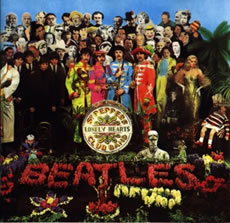 The eighth studio album by English rock band the Beatles. Released on 26 May 1967 in the United Kingdom and 2 June 1967 in the United States, it was an immediate commercial and critical success, spending 27 weeks at the top of the UK albums chart and 15 weeks at number one in the US.
The eighth studio album by English rock band the Beatles. Released on 26 May 1967 in the United Kingdom and 2 June 1967 in the United States, it was an immediate commercial and critical success, spending 27 weeks at the top of the UK albums chart and 15 weeks at number one in the US.
On release, the album was lauded by the vast majority of critics for its innovations in music production, songwriting and graphic design, for bridging a cultural divide between popular music and legitimate art, and for providing a musical representation of its generation and the contemporary counterculture.
It won four Grammy Awards in 1968, including Album of the Year, the first rock LP to receive this honour. In August 1966, the Beatles permanently retired from touring and began a three-month holiday from recording. During a return flight to London in November, Paul McCartney had an idea for a song involving an Edwardian era military band that would eventually form the impetus of the Sgt. Pepper concept.
Sessions for the album began on 24 November in Abbey Road Studio Two with two compositions inspired by their youth, “Strawberry Fields Forever” and “Penny Lane”, but after pressure from EMI, the songs were released as a double A-side single and were not included on the album. In February 1967, after recording the title track “Sgt. Pepper’s Lonely Hearts Club Band”, McCartney suggested that the Beatles should release an entire album that would represent a performance by the fictional Sgt. Pepper band. This alter ego group would give them the freedom to experiment musically.
During the recording sessions, the band furthered the technological progression they had made with their 1966 album Revolver. 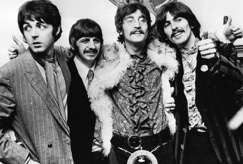 Knowing they would not have to perform the tracks live, they adopted an experimental approach to composition and recording on songs such as “With a Little Help from My Friends”, “Lucy in the Sky with Diamonds” and “A Day in the Life”.
Knowing they would not have to perform the tracks live, they adopted an experimental approach to composition and recording on songs such as “With a Little Help from My Friends”, “Lucy in the Sky with Diamonds” and “A Day in the Life”.
Producer George Martin and engineer Geoff Emerick’s innovative recording of the album included the liberal application of sound shaping signal processing and the use of a 40-piece orchestra performing aleatoric crescendos. Recording was completed on 21 April 1967.
The cover, depicting the Beatles posing in front of a tableau of celebrities and historical figures, was designed by the British pop artists Peter Blake and Jann Haworth. Sgt. Pepper is regarded by musicologists as an early concept album that advanced the use of extended form in popular music while continuing the artistic maturation seen on the Beatles’ preceding releases. It has been described as one of the first art rock LPs, aiding the development of progressive rock, and credited with marking the beginning of the Album Era. An important work of British psychedelia, the album incorporates a range of stylistic influences, including vaudeville, circus, music hall, avant-garde, and Western and Indian classical music.
The Beach Boys: Pet Sounds
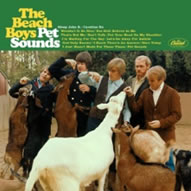 Is the eleventh studio album by American rock band the Beach Boys, released on May 16, 1966. It initially met with a lukewarm critical and commercial response in the United States, peaking at number 10 in the Billboard 200, a significantly lower placement than the band’s preceding albums. In the United Kingdom, the album was hailed by its music press and was an immediate commercial success, peaking at number 2 in the UK Top 40 Albums Chart and remaining among the top ten positions for six months.
Is the eleventh studio album by American rock band the Beach Boys, released on May 16, 1966. It initially met with a lukewarm critical and commercial response in the United States, peaking at number 10 in the Billboard 200, a significantly lower placement than the band’s preceding albums. In the United Kingdom, the album was hailed by its music press and was an immediate commercial success, peaking at number 2 in the UK Top 40 Albums Chart and remaining among the top ten positions for six months.
Originally promoted as “the most progressive pop album ever”, Pet Sounds attracted recognition for its ambitious recording and unusually sophisticated music, and is widely considered to be one of the most influential albums in music history. The album was produced and arranged by Brian Wilson, who also wrote and composed almost all of its music. Most of the recording sessions were conducted between January and April 1966, a year after he had quit touring with the Beach Boys in order to focus more attention on writing and recording. For Pet Sounds, Wilson’s goal was to create “the greatest rock album ever made”—a personalized work with no filler tracks.
It is sometimes considered a Wilson solo album, repeating the themes and ideas he had introduced with The Beach Boys Today! one year earlier. The album’s lead single, “Caroline, No”, was issued as his official solo debut. It was followed by two singles credited to the group: “Wouldn’t It Be Nice” (backed with “God Only Knows”) and “Sloop John B”. Collaborating with lyricist Tony Asher, Wilson’s orchestrations mixed conventional rock set-ups with elaborate layers of vocal harmonies, found sounds, and instruments never before associated with rock, such as bicycle bells, harpsichords, flutes, Electro-Theremin, trains, Hawaiian-sounding string instruments, Coca-Cola cans, and barking dogs. Unified by a Wall of Sound-style production, the album comprised Wilson’s “pet” sounds, consisting mainly of introspective songs like “You Still Believe in Me”, about faithfulness, “I Know There’s an Answer”, a critique of LSD users, and “I Just Wasn’t Made for These Times”, an autobiographical statement on social alienation (as well as the first use of a theremin-like instrument on a rock record). Recording was completed on April 13, 1966, with an unprecedented total production cost that exceeded $70,000 (equivalent to $520,000 in 2016).
A follow-up album, Smile, was immediately planned, but left unfinished. In 1997, a “making-of” version of Pet Sounds was overseen by Wilson and released as The Pet Sounds Sessions, containing the album’s first true stereo mix. Pet Sounds is regarded by musicologists as an early concept album that advanced the field of music production, introducing non-standard harmonies and timbres, and incorporating elements of pop, jazz, exotica, classical, and the avant-garde.
A heralding work of psychedelia, the album furthered an aesthetic trend within rock by helping it transform from dance music into music that was made for listening to, elevating itself to the level of art rock. Academic Bill Martin said that Pet Sounds represents a turning point where the Beach Boys “brought expansions in harmony, instrumentation (and therefore timbre), duration, rhythm, and the use of recording technology. Of these elements, the first and last were the most important in clearing a pathway toward the development of progressive rock.”
Bob Dylan: Highway 61 Revisited
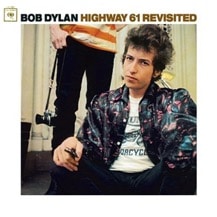 Is the sixth studio album by the American singer-songwriter Bob Dylan. It was released on August 30, 1965, by Columbia Records. Having until then recorded mostly acoustic music, Dylan used rock musicians as his backing band on every track of the album, except for the closing 11-minute ballad, “Desolation Row”.
Is the sixth studio album by the American singer-songwriter Bob Dylan. It was released on August 30, 1965, by Columbia Records. Having until then recorded mostly acoustic music, Dylan used rock musicians as his backing band on every track of the album, except for the closing 11-minute ballad, “Desolation Row”.
Critics have focused on the innovative way in which Dylan combined driving, blues-based music with the subtlety of poetry to create songs that captured the political and cultural chaos of contemporary America. Author Michael Gray has argued that in an important sense the 1960s “started” with this album. Leading with the hit single “Like a Rolling Stone”, the album features songs that Dylan has continued to perform live over his long career, including “Ballad of a Thin Man” and “Highway 61 Revisited”.
He named the album after the major American highway which connected his birthplace, Duluth, Minnesota, to southern cities famed for their musical heritage, including St. Louis, Memphis, New Orleans, and the Delta blues area of Mississippi
Elvis Presley: Elvis Presley
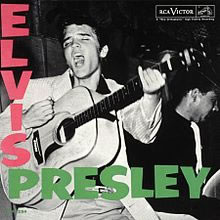
The “iconic cover” of Presley’s 1956 debut album
The debut studio album by American singer and musician Elvis Presley. It was released on RCA Victor, in mono, catalogue number LPM 1254, in March 1956. The recording sessions took place on January 10 and January 11 at the RCA Victor recording studios in Nashville, Tennessee, and on January 30 and January 31 at the RCA Victor studios in New York.
Additional material originated from sessions at Sun Studio in Memphis, Tennessee, on July 5, August 19 and September 10 of 1954, and on July 11, 1955.
The album spent ten weeks at number 1 on the Billboard Top Pop Albums chart in 1956, the first rock and roll album ever to make it to the top of the charts, and the first million-selling album of that genre.
The Jimi Hendrix Experience: Are You Experienced?
Is the debut studio album by English-American rock band the Jimi Hendrix Experience. Released in 1967, the LP was an immediate critical and commercial success, and it is widely regarded as one of the greatest debuts in the history of rock music. The album features Jimi Hendrix’s innovative approach to songwriting and electric guitar playing which soon established a new direction in psychedelic and hard rock music. By mid-1966, Hendrix was struggling to earn a living playing the R&B circuit as a backing guitarist.
After being referred to Chas Chandler, who was leaving the Animals and interested in managing and producing artists, Hendrix was signed to a management and production contract with Chandler and ex-Animals manager Michael Jeffery. Chandler brought Hendrix to London and began recruiting members for a band 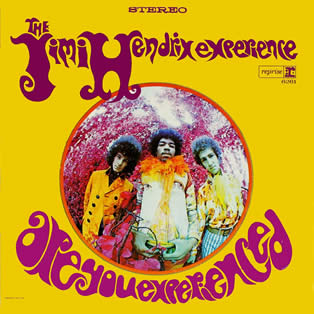 designed to showcase the guitarist’s talents, the Jimi Hendrix Experience. In late October, after having been rejected by Decca Records, the Experience signed with Track, a new label formed by the Who’s managers Kit Lambert and Chris Stamp.
designed to showcase the guitarist’s talents, the Jimi Hendrix Experience. In late October, after having been rejected by Decca Records, the Experience signed with Track, a new label formed by the Who’s managers Kit Lambert and Chris Stamp.
Are You Experienced and its preceding singles were recorded over a five-month period from late October 1966 through early April 1967. The album was completed in sixteen recording sessions at three London locations, including De Lane Lea Studios, CBS, and Olympic. Released in the UK on May 12, 1967, Are You Experienced spent 33 weeks on the charts, peaking at number two.
The album was issued in the US on August 23 by Reprise Records, where it reached number five on the Billboard 200, remaining on the chart for 106 weeks, 27 of those in the Top 40. The album also spent 70 weeks on the US Billboard R&B chart, where it peaked at #10.
The US version contained some of Hendrix’s best known songs, including the Experience’s first three singles, which, though omitted from the British edition of the LP, were top ten hits in the UK: “Purple Haze”, “Hey Joe”, and “The Wind Cries Mary”.
The Beatles: Revolver
The seventh studio album by the English rock band the Beatles. Released on 5 August 1966, it was the Beatles’ final recording project before their retirement as live performers and marked the group’s most overt use of studio technology up to that time, building on the advances of their 1965 release Rubber Soul.
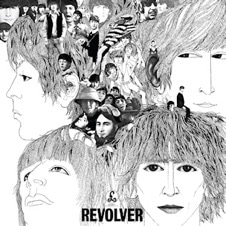 The album’s diverse sounds include tape loops and backwards recordings on the psychedelic “Tomorrow Never Knows”, a classical string octet on “Eleanor Rigby”, and Indian-music backing on “Love You To”.
The album’s diverse sounds include tape loops and backwards recordings on the psychedelic “Tomorrow Never Knows”, a classical string octet on “Eleanor Rigby”, and Indian-music backing on “Love You To”.
The album was reduced to eleven songs by Capitol Records in North America, where three of its tracks instead appeared on the June 1966 release Yesterday and Today. The Beatles recorded the album following a three-month break from professional commitments at the start of 1966, and during a period when London was feted as the era’s cultural capital.
The songs reflect the influence of psychedelic drugs such as LSD and the increasing sophistication of the Beatles’ lyrics to address themes including death and transcendence from material concerns. With no thoughts of reproducing their new material in concert, the band made liberal use of studio techniques such as varispeeding, reversed tapes, close audio miking and automatic double tracking (ADT), in addition to employing musical instrumentation outside of their standard live set-up. Some of the changes in studio practice introduced by Revolver, particularly ADT, were soon adopted throughout the recording industry. The sessions also produced a non-album single, “Paperback Writer” backed with “Rain”, for which the Beatles filmed their first on-location promotional films. In the UK, Revolver’s fourteen tracks were released to radio stations throughout July 1966.
In the US, it was the last Beatles album to be subjected to Capitol’s policy of altering the band’s intended running order and content. The release there coincided with the Beatles’ final concert tour, which was marred by the controversy surrounding John Lennon’s remark that the band had become “more popular than Jesus”. 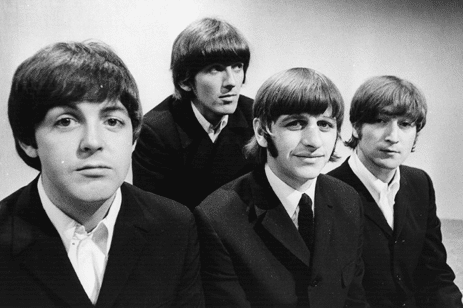 The record topped the UK Albums Chart for seven weeks and America’s Billboard Top LPs list for six weeks. Together with the children’s novelty song “Yellow Submarine”, “Eleanor Rigby” became an international hit when issued as a double A-side single.
The record topped the UK Albums Chart for seven weeks and America’s Billboard Top LPs list for six weeks. Together with the children’s novelty song “Yellow Submarine”, “Eleanor Rigby” became an international hit when issued as a double A-side single.
The album cover was designed by Klaus Voormann, whose work combined Aubrey Beardsley-inspired line drawing with photo collage and went on to win the 1967 Grammy Award for Best Album Cover, Graphic Arts. The 1987 international CD release standardised the album’s content to the original Parlophone version.
Revolver expanded the scope of pop music in terms of the range of musical styles used on the album and the lyrical content of its songs. The album was influential in advancing principles espoused by the 1960s counterculture and in inspiring the development of subgenres such as psychedelic rock, electronica, progressive rock and world music
Michael Jackson: Thriller
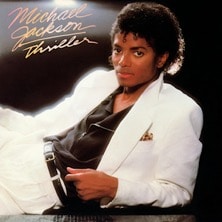 The sixth studio album by American singer Michael Jackson, released on November 30, 1982, in the United States by Epic Records and internationally by CBS Records. It explores genres similar to Jackson’s previous album, Off the Wall, including pop, post-disco, rock and funk.
The sixth studio album by American singer Michael Jackson, released on November 30, 1982, in the United States by Epic Records and internationally by CBS Records. It explores genres similar to Jackson’s previous album, Off the Wall, including pop, post-disco, rock and funk.
Recording sessions took place from April to November 1982 at Westlake Recording Studios in Los Angeles, with a production budget of $750,000. Quincy Jones produced the album and Jackson wrote four of its nine songs. In just over a year, Thriller became—and currently remains—the world’s best-selling album, with estimated sales of 66 million copies. It is the best-selling album in the United States and the first album to be certified 33× multi-platinum, having shipped 33 million album-equivalent units.
The album won a record-breaking eight Grammy Awards in 1984, including Album of the Year. It produced seven singles—”The Girl Is Mine”, “Billie Jean”, “Beat It”, “Wanna Be Startin’ Somethin'”, “Human Nature”, “P.Y.T. (Pretty Young Thing)”, and “Thriller”—all of which reached the top 10 on the US Billboard Hot 100 chart. Thriller broke racial barriers in pop music, enabling Jackson’s appearances on MTV and meeting with President Ronald Reagan at the White House. The album was one of the first to use music videos as successful promotional tools, and the videos for the songs “Thriller”, “Billie Jean”, and “Beat It” all received regular rotation on MTV.
The Who: Who’s Next
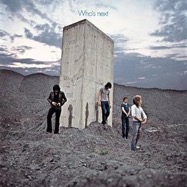 The fifth studio album by English rock band The Who. It developed from the aborted Lifehouse project, a multi-media rock opera written by the group’s Pete Townshend as a follow-up to the band’s 1969 album Tommy.
The fifth studio album by English rock band The Who. It developed from the aborted Lifehouse project, a multi-media rock opera written by the group’s Pete Townshend as a follow-up to the band’s 1969 album Tommy.
The project was cancelled due to its complexity and conflicts with Kit Lambert, the band’s manager, but Townshend was persuaded to record the songs as a straightforward studio album.
The Who recorded Who’s Next with assistance from recording engineer Glyn Johns. After producing the song “Won’t Get Fooled Again” in the Rolling Stones Mobile Studio, they relocated to Olympic Studios to record and mix most of the album’s remaining songs.
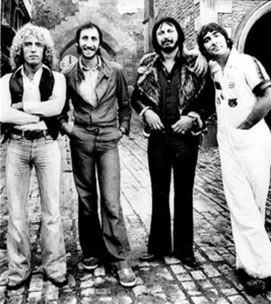 They made prominent use of the synthesizer on the album, particularly on “Won’t Get Fooled Again” and “Baba O’Riley”, which were both released as singles.
They made prominent use of the synthesizer on the album, particularly on “Won’t Get Fooled Again” and “Baba O’Riley”, which were both released as singles.
The cover photo was shot by Ethan Russell and made reference to the monolith in the 1968 film 2001: A Space Odyssey, as it featured group members having urinated against a concrete piling protruding from a slag heap.
Who’s Next was an immediate success when it was released in August 1971. It has since been viewed by many critics as the Who’s best record and one of the greatest albums of all time.
Bruce Springsteen: Born to Run
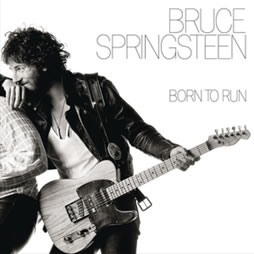 The third studio album by American singer-songwriter Bruce Springsteen. As his effort to break into the mainstream, the album was a commercial success, peaking at number three on the Billboard 200 and eventually selling six million copies in the United States.
The third studio album by American singer-songwriter Bruce Springsteen. As his effort to break into the mainstream, the album was a commercial success, peaking at number three on the Billboard 200 and eventually selling six million copies in the United States.
Two singles were released from the album: “Born to Run” and “Tenth Avenue Freeze-Out”; the first helped Springsteen to reach mainstream popularity.
The tracks “Thunder Road” and “Jungleland” became staples of album-oriented rock radio and Springsteen concert high points. Born to Run garnered widespread acclaim when it was first released on August 25, 1975, by Columbia Records.
The Eagles: Hotel California
 The fifth studio album by American rock band the Eagles, and is one of the best-selling albums of all time. Three singles were released from the album, each reaching high in the Billboard Hot 100: “New Kid in Town” (number 1), “Hotel California” (number 1), and “Life in the Fast Lane” (number 11).
The fifth studio album by American rock band the Eagles, and is one of the best-selling albums of all time. Three singles were released from the album, each reaching high in the Billboard Hot 100: “New Kid in Town” (number 1), “Hotel California” (number 1), and “Life in the Fast Lane” (number 11).
The album became the band’s best-selling album after Their Greatest Hits (1971–1975), with over 16 million copies sold in the U.S. alone and over 32 million copies sold worldwide. The album was ranked number 37 on Rolling Stone’s list of “The 500 Greatest Albums of All Time”. The album was recorded by Bill Szymczyk at the Criteria and Record Plant studios between March and October 1976, and then released on Asylum in December.
It was their first album with guitarist Joe Walsh, who had replaced founding member Bernie Leadon, and is the last album to feature bassist Randy Meisner. It is their sixth album (including Their Greatest Hits (1971–1975)), and fifth of new material. The front cover is a photograph of the Beverly Hills Hotel by David Alexander. The album topped the charts and won the band two Grammy Awards for “Hotel California” and “New Kid in Town”. The album was nominated for Album of the Year but lost to Fleetwood Mac’s Rumours.
Rolling Stones: Let it Bleed
The eighth British and tenth American album by English rock band the Rolling Stones, released in December 1969 by Decca Records in the United Kingdom and London Records in the United States. Released shortly after the band’s 1969 American Tour, it is the follow-up to 1968’s Beggars Banquet and the last album by the band to feature Brian Jones as well as the first to feature Mick Taylor.
 Although the Stones had begun the recording of “You Can’t Always Get What You Want” in November 1968, before Beggars Banquet had been released, recording for Let It Bleed began in earnest in February 1969 and continued sporadically until early November. Brian Jones performs on only two tracks: playing the autoharp on “You Got the Silver”, and percussion on “Midnight Rambler”. His replacement, Mick Taylor, plays guitar on two tracks, “Country Honk” and “Live with Me”, as well as on “Honky Tonk Women” which was recorded during the Let It Bleed sessions.
Although the Stones had begun the recording of “You Can’t Always Get What You Want” in November 1968, before Beggars Banquet had been released, recording for Let It Bleed began in earnest in February 1969 and continued sporadically until early November. Brian Jones performs on only two tracks: playing the autoharp on “You Got the Silver”, and percussion on “Midnight Rambler”. His replacement, Mick Taylor, plays guitar on two tracks, “Country Honk” and “Live with Me”, as well as on “Honky Tonk Women” which was recorded during the Let It Bleed sessions.
Keith Richards, who had already shared vocal duties with Mick Jagger on “Connection” and sung separate lead vocals on parts of “Something Happened to Me Yesterday” and “Salt of the Earth”, sang his first solo lead vocal on a Rolling Stones recording with “You Got the Silver”. The London Bach Choir sang on “You Can’t Always Get What You Want” but publicly disassociated itself from the album, citing what author Stephen Davis terms its “relentless drug ambience”. Let It Bleed was originally scheduled for release in July 1969. Although “Honky Tonk Women” was released as a single that month, the album itself suffered numerous delays and was eventually released in December 1969, after the band’s US tour for it had already completed.
The majority of the album was recorded at Olympic Studios in London, with further work taking place at Elektra Sound Recorders Studios, 962 La Cienega Boulevard, Los Angeles, California, 90069, while the Stones prepared for the tour. The Los Angeles-recorded portions included overdubs by guest musicians Merry Clayton (on “Gimme Shelter”), Byron Berline (on “Country Honk”), and Bobby Keys and Leon Russell (on “Live with Me”). Finally, an unreleased version of “I Don’t Know The Reason Why (a. k. a. Hillside Blues)” was also recorded there in October 1969 with Mick Taylor.
The Beatles: White Album
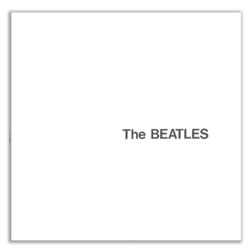 The ninth studio album by English rock group the Beatles, released on 22 November 1968. A double album, its plain white sleeve has no graphics or text other than the band’s name embossed,[a] which was intended as a direct contrast to the vivid cover artwork of the band’s earlier Sgt. Pepper’s Lonely Hearts Club Band. Although no singles were issued from The Beatles in Britain and the United States, the songs “Hey Jude” and “Revolution” originated from the same recording sessions and were issued on a single in August 1968.
The ninth studio album by English rock group the Beatles, released on 22 November 1968. A double album, its plain white sleeve has no graphics or text other than the band’s name embossed,[a] which was intended as a direct contrast to the vivid cover artwork of the band’s earlier Sgt. Pepper’s Lonely Hearts Club Band. Although no singles were issued from The Beatles in Britain and the United States, the songs “Hey Jude” and “Revolution” originated from the same recording sessions and were issued on a single in August 1968.
The album’s songs range in style from British blues and ska to tracks influenced by Chuck Berry and by Karlheinz Stockhausen. Most of the songs on the album were written during March and April 1968 at a Transcendental Meditation course in Rishikesh, India.
The group returned to EMI Studios (now known as Abbey Road Studios) in May to commence recording sessions that lasted through to October. During these sessions, arguments broke out among the Beatles, and witnesses in the studio saw band members quarrel over creative differences.
Another divisive element was the constant presence of John Lennon’s new partner, Yoko Ono, whose attendance at the sessions broke with the Beatles’ policy regarding wives and girlfriends. 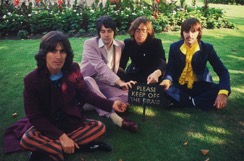 After a series of problems, including producer George Martin taking a sudden leave of absence and engineer Geoff Emerick quitting, Ringo Starr left the band briefly in August.
After a series of problems, including producer George Martin taking a sudden leave of absence and engineer Geoff Emerick quitting, Ringo Starr left the band briefly in August.
The same tensions continued throughout the following year, leading to the eventual break-up of the Beatles in April 1970. On release, The Beatles received favourable reviews from the majority of music critics, but other commentators found its satirical songs unimportant and apolitical amid the turbulent political and social climate of 1968.
The band and Martin have since debated whether the group should have released a single album instead. Nonetheless, The Beatles reached number one on the charts in both the United Kingdom and the United States and has since been viewed by some critics as one of the greatest albums of all time.
The Beatles: Abbey Road
The eleventh studio album by English rock band the Beatles, released on 26 September 1969 by Apple Records. The recording sessions for the album were the last in which all four Beatles participated. Although Let It Be was the final album that the Beatles completed before the band’s dissolution in April 1970, most of the album had been recorded before the Abbey Road sessions began. A double A-side single from the album, “Something”/”Come Together”, released in October, topped the Billboard chart in the US. 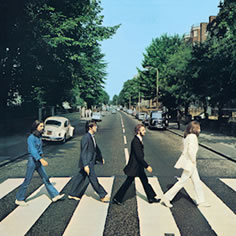 Abbey Road is a rock album that incorporates genres such as blues, pop, and progressive rock, and it makes prominent use of the Moog synthesizer and the Leslie speaker. Side two contains a medley of song fragments edited together to form a single piece. The album was recorded amid a more enjoyable atmosphere than the Get Back/Let It Be sessions earlier in the year, but there were still frequent disagreements within the band, particularly over Paul McCartney’s song “Maxwell’s Silver Hammer”. John Lennon had privately left the group by the time the album was released and McCartney publicly quit the following year. A 16-minute medley of several short songs comprise the majority of side two, closing with the lyric “and in the end, the love you take is equal to the love you make”. Although Abbey Road was an immediate commercial success and reached number one in the UK and US, it initially received mixed reviews, some critics describing its music as inauthentic and bemoaning the production’s artificial effects. Many critics now view the album as the Beatles’ best and rank it as one of the greatest albums of all time. In particular, George Harrison’s contributions, “Something” and “Here Comes the Sun”, are considered to be among the best songs he wrote for the group. The album’s cover features the four band members walking across a zebra crossing outside Abbey Road Studios and has become one of the most famous and imitated images in the history of popular music.
Abbey Road is a rock album that incorporates genres such as blues, pop, and progressive rock, and it makes prominent use of the Moog synthesizer and the Leslie speaker. Side two contains a medley of song fragments edited together to form a single piece. The album was recorded amid a more enjoyable atmosphere than the Get Back/Let It Be sessions earlier in the year, but there were still frequent disagreements within the band, particularly over Paul McCartney’s song “Maxwell’s Silver Hammer”. John Lennon had privately left the group by the time the album was released and McCartney publicly quit the following year. A 16-minute medley of several short songs comprise the majority of side two, closing with the lyric “and in the end, the love you take is equal to the love you make”. Although Abbey Road was an immediate commercial success and reached number one in the UK and US, it initially received mixed reviews, some critics describing its music as inauthentic and bemoaning the production’s artificial effects. Many critics now view the album as the Beatles’ best and rank it as one of the greatest albums of all time. In particular, George Harrison’s contributions, “Something” and “Here Comes the Sun”, are considered to be among the best songs he wrote for the group. The album’s cover features the four band members walking across a zebra crossing outside Abbey Road Studios and has become one of the most famous and imitated images in the history of popular music.
